Real History With Jeff LaHurd: The bohemian brass band that entertained Sarasota
- Oops!Something went wrong.Please try again later.
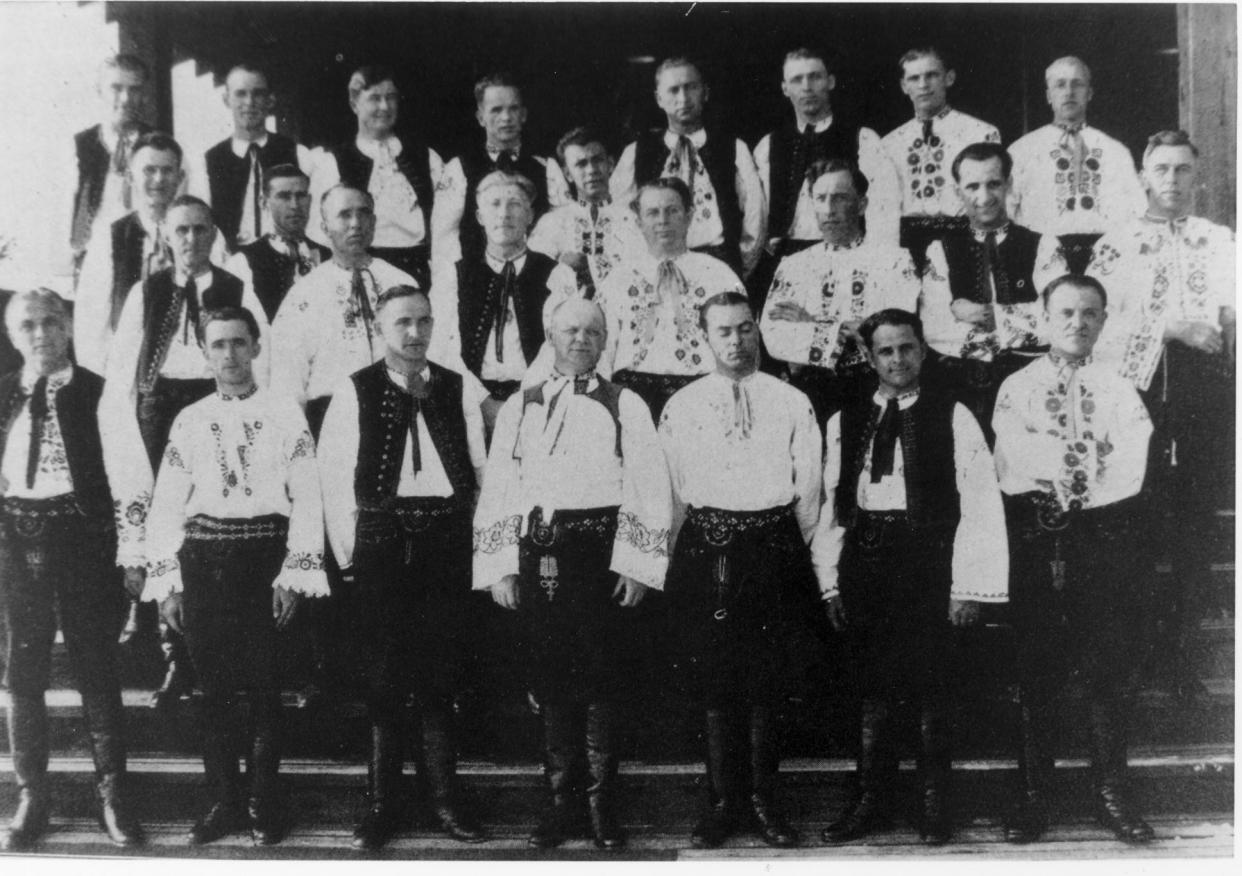
If ever there was a musical group which reflected the era and the community in which they played, it was the colorful Czecho-Slovakian National Band who performed in Sarasota during the halcyon years of the mid-1920s.
During their brief time here, no grand opening or civic event was complete without an appearance by this august group of talented and colorful bohemian artists.
These musicians performed free concerts for locals and snowbirds downtown at a bandshell on Gulf Stream Avenue, at another on St. Armands at Harding Circle, and at the multicolored bathing pavilion on Lido Beach.
They played at the Mira Mar Auditorium, yesterday’s version of the Van Wezel Performing Arts Hall.
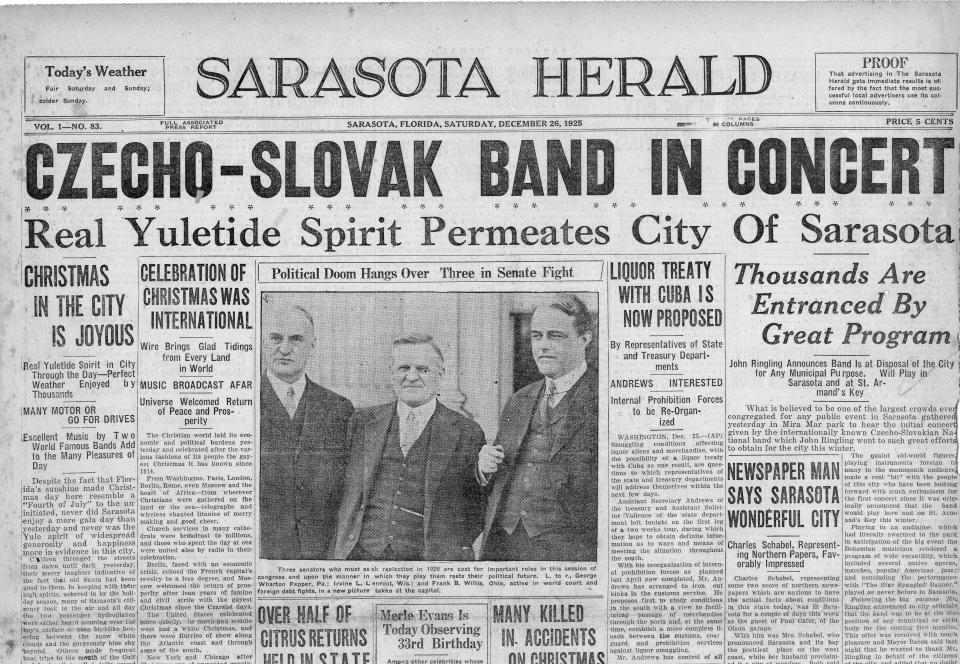
When an important personage was feted in Sarasota at a luncheon or dinner at one of the hotels, the band was called upon to render their beautiful music. Same with locally hosted national conventions.
They were on hand to impress John and Mable’s important guests at grand soirees at Ca’ d’Zan on the ornate bayfront landing.
When the great Sac and Fox nation athlete Jim Thorpe was in town to play a football exhibition game with his all-indigenous exhibition team, the Czech band provided the entertainment. Said the Herald, “[Their] presence at the game today will add considerably to the already colorful array which is promised at any game in which Thorpe and his noted Indian players participate.”
They became an integral part of Sarasota’s social scene.
Early on, the benefits of a local band were recognized as an asset to the growth of Sarasota as a tourist draw. That and golf were considered the two key ingredients to success.
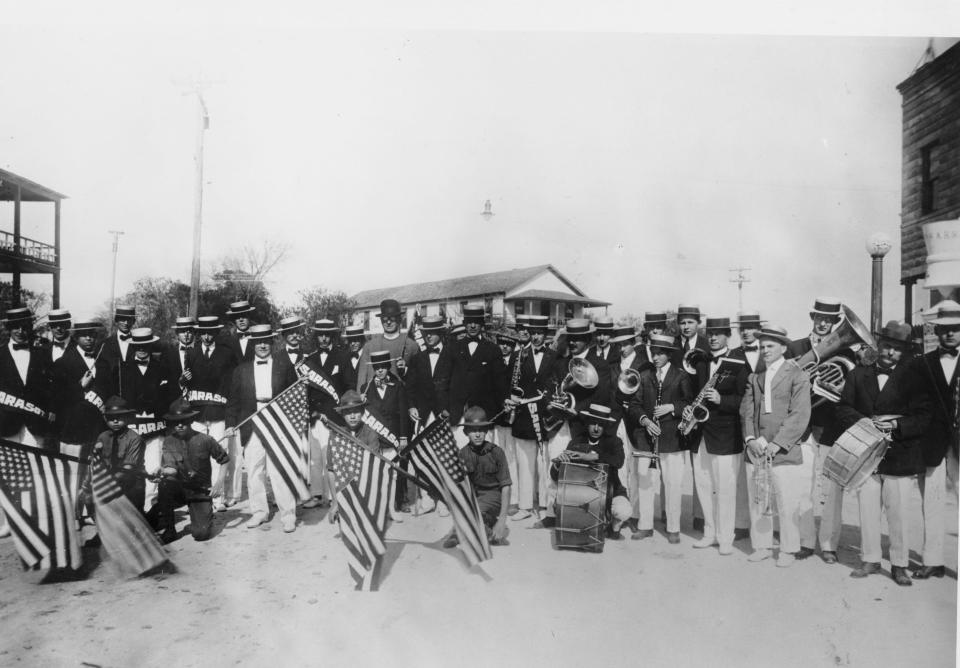
In 1910, The Sarasota Times had lobbied for a local brass band, editorializing, “There is nothing that gives so much snap and go to a town as a brass band.” Soon the band was formed and played at many local functions and receptions.”
The brass band morphed into the Sarasota Band under the direction of Merle Evans, the internationally renowned leader of the Ringling Bros. and Barnum & Bailey circus ensemble. Known as the “Toscani of the big top,” the coronet playing Evans is credited with playing for the circus for fifty years, never missing a single show in thirty thousand performances. The American Federation of Musicians credited Evans with playing to more persons than any musician in history.” (When the Hartford circus fire broke out in 1944, Evans and his men played to the very last moment, trying to calm the panicked crowd.)
During the circus off-season, Evans directed such musical fare as “The Conqueror,” by Ticke; “Maximillian Robespierre,” by Lidoff, and “Hungarian Fantasia” by Tobani. For those with less high-brow tastes, his repertoire included such well-known melodies as “The Blue Danube Waltz,” by Strauss.
Later, Voltaire Sturgis took over leadership of the Sarasota Band, and would also form the Sarasota High School Band from 1930 to 1956.
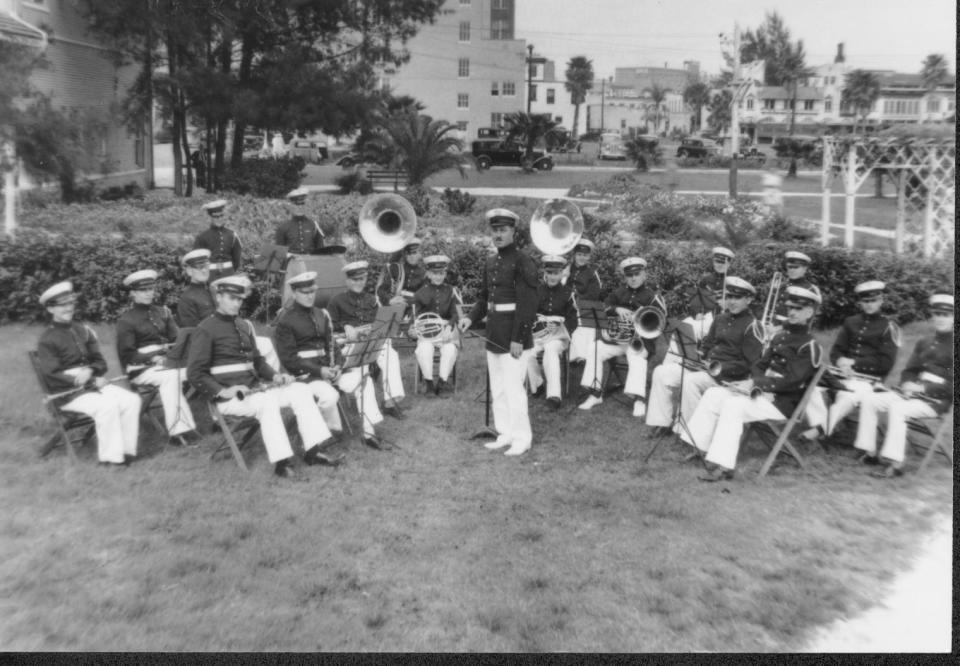
As for golf, when citizens were deciding whether to revamp the municipal course, it was said that a “Tourist town without golf, is like the play Hamlet without the main character.” The sport has since proven mildly popular.
First word of the arrival of the Czecho band was reported on the front page of the Sarasota Herald, Nov. 5, 1925, alongside a pen and ink drawing of John Ringling. “John Ringling Wires That The Czecho-Slovakian Musicians Have Been Signed.” The paper reported that the 30-piece group from Prague had been performing to great acclaim throughout Europe in Rotterdam, Paris, Amsterdam and the Hague.
Prior to leaving Prague the bandsmen gave a concert to President Masaryk of their homeland “who praised the musicians and wished them every success in the New World.”
The band was under the supervision of fellow countryman Otokar Bartik, manager and ballet master of the New York Metropolitan Opera.
After arriving at Ellis Island in New York it was said they charmed the officials and other immigrants, themselves looking to start a new life in America.
After Bartik heard them play, he agreed to be their sponsor and arrange a tour of cities with large Czech populations. But John Ringling, who was in New York, heard them and thought they were exactly what he needed to bring color and excitement to his developments, which were in the process of being completed. Bartik, who knew Ringling, agreed to suspend his tour in favor of Ringling’s proposal to bring them to Sarasota for the winter months.
More Sarasota history
When oil fever struck, but no one struck black gold
Concrete signs that more is less for local skyline
The Herald reported that Ringling wrote to Masaryk that his countrymen arrived safely and would be well cared for. Ringling built a wooden quarter for them behind the El Vernona, later John Ringling Hotel.
For Ringling, who was working on a million-dollar bridge to his developments on the keys with their European inspired wide tree-lined boulevards and statuary, the band was the perfect choice. A colorful adjunct to underscore the exotic charms of the old world.
The band’s twice a day concerts gave the cars and busloads full of sightseers and buyers (it was said that $1 million dollars of property was sold that first day) a colorful culture sampling they otherwise would not have enjoyed.
Often the group would form up downtown in their colorful old world uniforms, meet at Orange Ave. and Main St., and parade to the flagpole at Five Points.
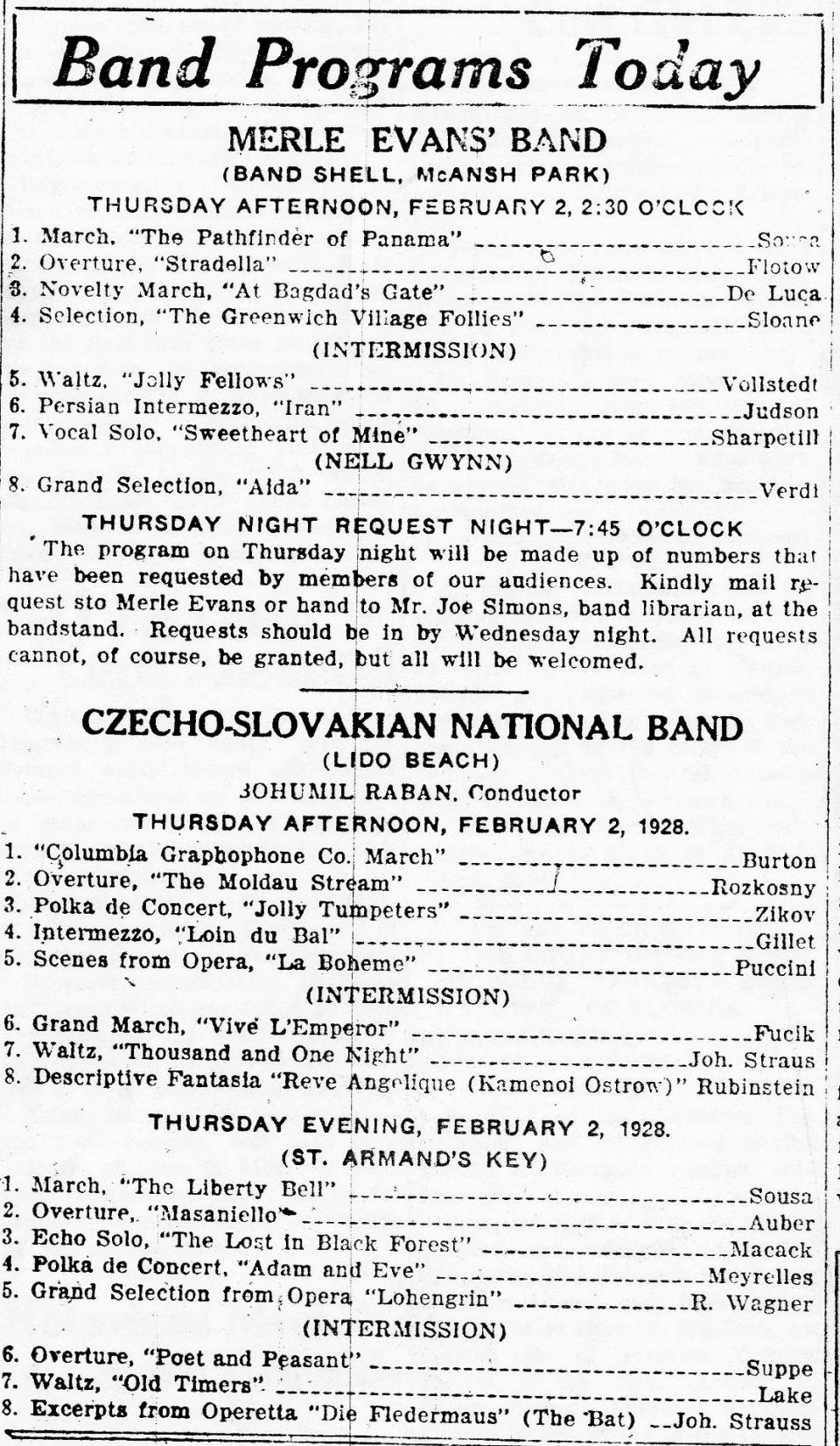
Writing about their reception some years later, Sarasota Herald-Tribune journalist, Jane Holt reported that when they gathered, office workers hung out of windows wildly applauded them and shouted out requests. From there, playing stirring European and American marches they continued down lower Main St. to the bandshell at Caples Park adjacent to the bayfront.
For their introduction to “a music loving Sarasota public” on Christmas Day, 1925 the band offered the traditional Yuletide folksongs of various European countries.
Their comprehensive repertoire was varied and reflected classical training. Throughout the season, the times and locations of their performances, along with the song list, were provided in the Sarasota Herald.
A sample of their fare on March 17, 1929, with Bohumil Raban conducting:
Overture “Rienzi” – Wagner
Intermezzo “Loin du Bal” – Gillet
Song “Spring’s Awakening” – Bach
Grand Selection from “Bohemian Girl” – Balfe
INTERMISSION
“Unfinished Symphony” (First Movement) – Schubert
Waltz “The Skaters” – Waldteufel
“Southern Rhapsody” – Hosmer
During the doldrums of the real estate crash, such heady offerings offered a refreshing respite. Artist, Mrs. Florence Marone of New York City who had been traveling around the country with her husband looking for an idyllic place to call home found it in Sarasota. Writing to a friend, she noted, “We spent Saturday and Sunday at the [Whitfield)] country club meeting people and dancing to the Czecho-Slovakian Band, and we were so enthusiastic that we wanted to live here forever.”
During Sarasota’s off season, the band played for showman and Ringling friend, Sam Gumpertz at Luna Park, Coney Island, and recorded for Victor Records. The Herald reported that while they were there, tutors were hired to teach them English.
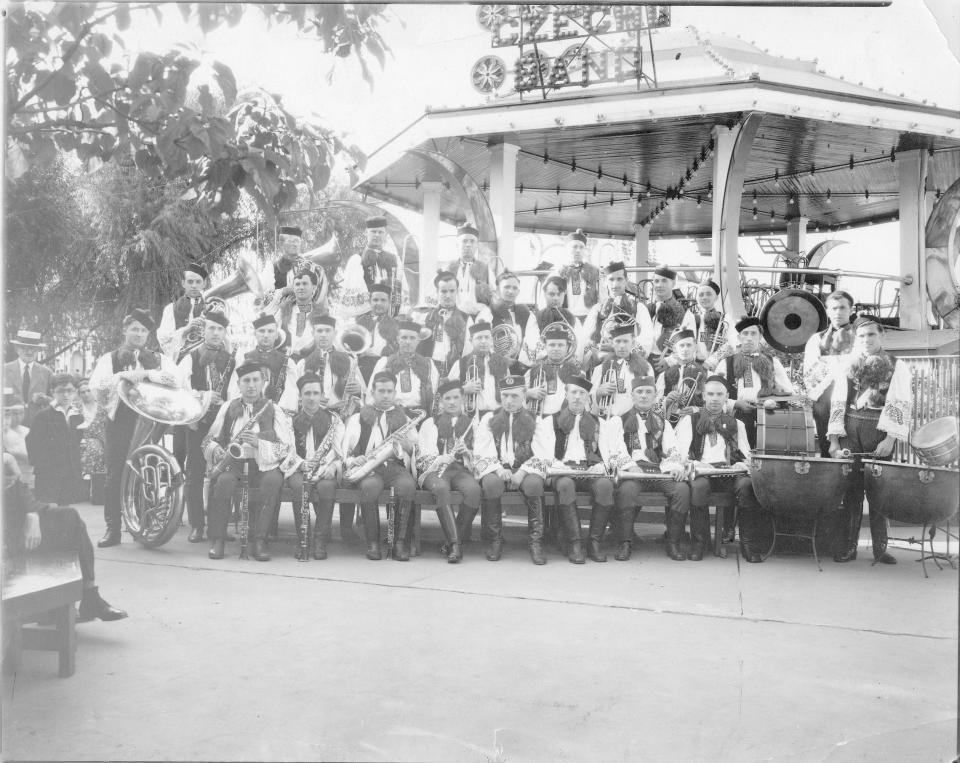
With the Great Depression taking hold, the Czecho-Slovakian Band ceased playing in Sarasota and dispersed a few years later.
A couple bandsmen returned, and at least one member, Eugene Pohunek worked at the Ringling Museum.
And with a nod to his past, he played his French Horn for the Florida West Coast Symphony. The colorful times with his musical compatriots in their Bohemian uniforms a pleasant but distant memory.
Jeff LaHurd was raised in Sarasota and is an award-winning author/historian.
This article originally appeared on Sarasota Herald-Tribune: Jeff LaHurd: Czecho-Slovakian National Band had Sarasota heyday

